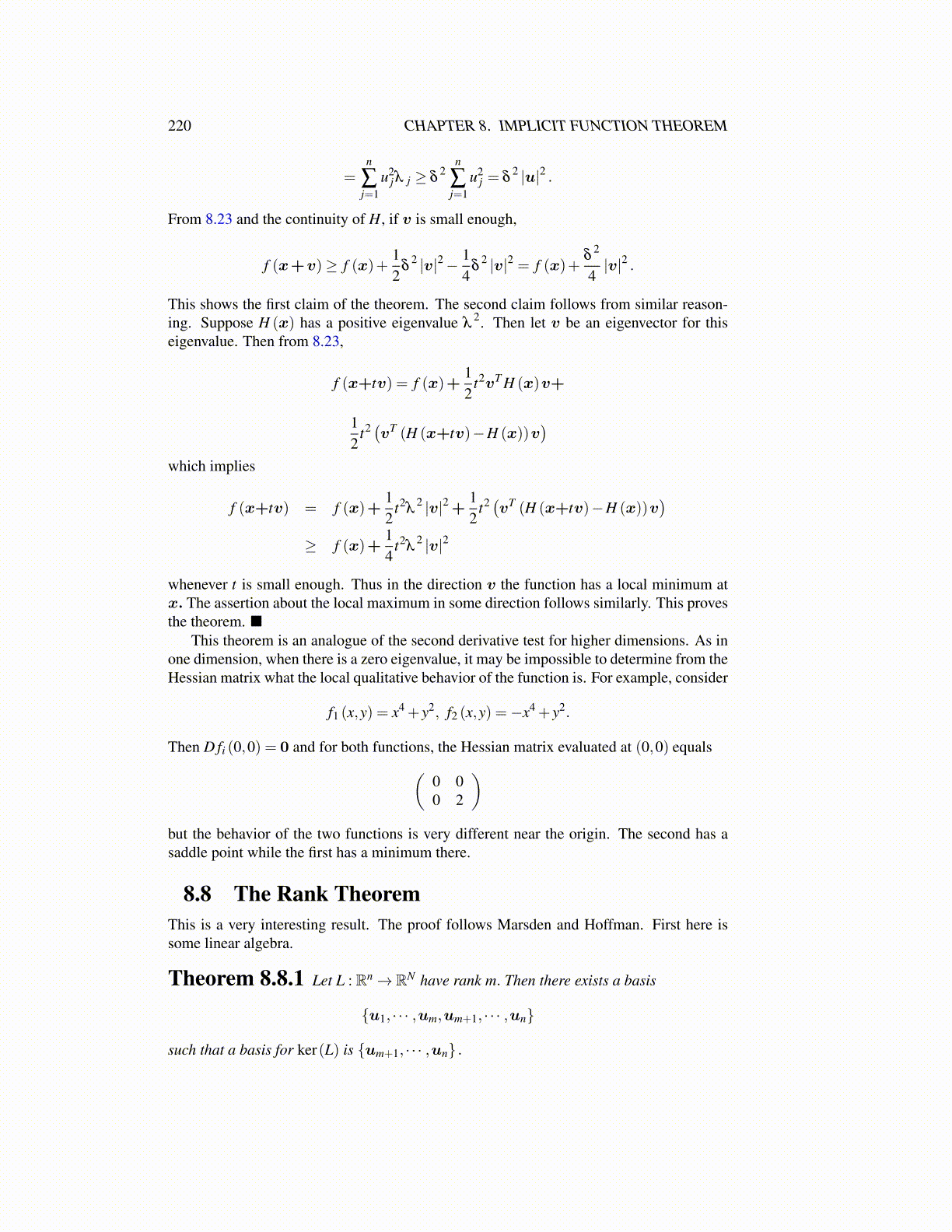
220 CHAPTER 8. IMPLICIT FUNCTION THEOREM
=n
∑j=1
u2jλ j ≥ δ
2n
∑j=1
u2j = δ
2 |u|2 .
From 8.23 and the continuity of H, if v is small enough,
f (x+v)≥ f (x)+12
δ2 |v|2− 1
4δ
2 |v|2 = f (x)+δ
2
4|v|2 .
This shows the first claim of the theorem. The second claim follows from similar reason-ing. Suppose H (x) has a positive eigenvalue λ
2. Then let v be an eigenvector for thiseigenvalue. Then from 8.23,
f (x+tv) = f (x)+12
t2vT H (x)v+
12
t2 (vT (H (x+tv)−H (x))v)
which implies
f (x+tv) = f (x)+12
t2λ
2 |v|2 + 12
t2 (vT (H (x+tv)−H (x))v)
≥ f (x)+14
t2λ
2 |v|2
whenever t is small enough. Thus in the direction v the function has a local minimum atx. The assertion about the local maximum in some direction follows similarly. This provesthe theorem. ■
This theorem is an analogue of the second derivative test for higher dimensions. As inone dimension, when there is a zero eigenvalue, it may be impossible to determine from theHessian matrix what the local qualitative behavior of the function is. For example, consider
f1 (x,y) = x4 + y2, f2 (x,y) =−x4 + y2.
Then D fi (0,0) = 0 and for both functions, the Hessian matrix evaluated at (0,0) equals(0 00 2
)but the behavior of the two functions is very different near the origin. The second has asaddle point while the first has a minimum there.
8.8 The Rank TheoremThis is a very interesting result. The proof follows Marsden and Hoffman. First here issome linear algebra.
Theorem 8.8.1 Let L : Rn→ RN have rank m. Then there exists a basis
{u1, · · · ,um,um+1, · · · ,un}
such that a basis for ker(L) is {um+1, · · · ,un} .